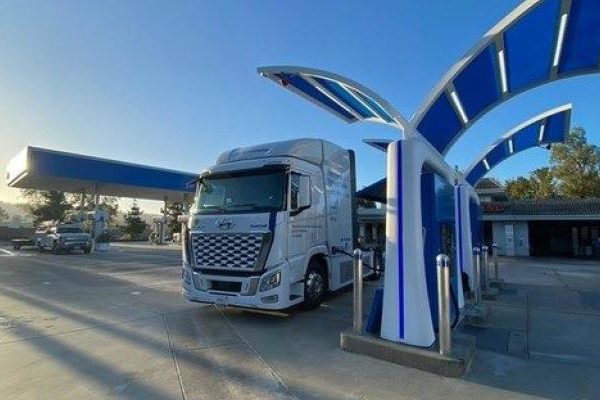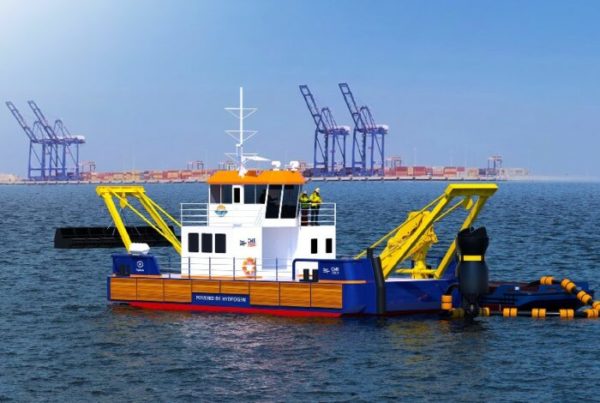
Can sound waves make hydrogen fuel more efficient and affordable to produce? Recent research might have the answer. An innovative research project uncovered a way to boost the productivity of water electrolysis, the production method for creating green hydrogen. Learn more about what this important breakthrough means for the hydrogen fuel industry.
Supercharged Electrolysis With Sound Waves
A team of researchers at RMIT University in Melbourne, Australia, made a breakthrough in green hydrogen technology in December 2022. The project involved using sound waves to augment the production of hydrogen through water electrolysis. The use of sound waves in the electrolysis process resulted in 14 times more electrical output and 27% energy savings compared to conventional electrolysis.
Using sound waves in the electrolysis process could make electrolysis hydrogen production more affordable. The current and most common way of producing hydrogen through electrolysis requires fossil fuels. As a result, the electrodes are made of expensive materials so they don’t corrode during the electrolysis process. Water is not corrosive, so more cost-effective electrode materials can be used.
Additionally, the sound waves kept bubbles from building up on the electrodes. Bubble buildup reduces the conductivity of the electrodes. Preventing bubble buildup with sound waves can make water electrolysis much more efficient. As a result, the researchers at RMIT University produced 14 times more hydrogen through water electrolysis compared to electrolysis without acoustic water frustration.
Why Green Hydrogen Matters
More efficient green hydrogen production is the primary benefit of the breakthrough at RMIT University. There are two main types of produced hydrogen today — green hydrogen and blue hydrogen. Green hydrogen is produced via water electrolysis. Blue hydrogen is produced through fossil fuel electrolysis which emits greenhouse gasses.
Improving green hydrogen production is vital for the future of hydrogen as a clean energy source. The GHG emissions produced by blue hydrogen contribute to the far-reaching impact of climate change. For instance, whole research projects are dedicated to tracking the ecological impact of climate change on northern bodies of water. If hydrogen is going to be a mainstream clean energy source, producing it can’t harm the environment.
Advances in green hydrogen production are key to making it more financially viable than blue hydrogen. If green hydrogen is more cost-effective to produce, the industry will adopt it more widely. Switching to water as the electrolyte will also reduce dependence on fossil fuels and create a green supply chain for hydrogen fuel.
Hydrogen is among today’s leading candidates for clean alternatives to fossil fuels. In fact, some of the biggest benefits of switching to hydrogen include high energy efficiency and sustainability compared to other fuels. Hydrogen fuel cells have especially high potential for electrifying large vehicles like tractor-trailers and construction vehicles, which would otherwise require large batteries.
The acoustically-induced water frustration electrolysis technique developed at RMIT University could help make hydrogen greener and more cost-effective. Water is much more readily available than fossil fuels, and the materials needed for water electrodes are less expensive. These cost savings are vital for making hydrogen fuel competitive with fossil fuels.
A Green Future for Hydrogen Fuel
Innovation is the key to transitioning the world from fossil fuels to clean, renewable fuels. Hydrogen has the potential to be a new mainstream fuel, particularly in the transportation sector. More advancements in hydrogen production are needed to bring it to the masses, though.
Read the most up to date Fuel Cell and Hydrogen Industry news at FuelCellsWorks
The research at RMIT University in Australia is helping hydrogen fuel technology get a step closer to becoming a mainstream fuel. The addition of sound waves in the electrolysis process could have a far-reaching ripple effect that will make hydrogen fuel more cost-effective and sustainable.


Jane Marsh, Contributor
The views and opinions expressed herein are those of the authors and do not necessarily reflect the official policy or position of Fuel Cells Works, its directors, partners, staff, contributors, or suppliers. Any content provided by our contributors or authors are of their own opinion and are not intended to malign any religion, ethnic group, club, organization, company, individual or anyone or anything.




